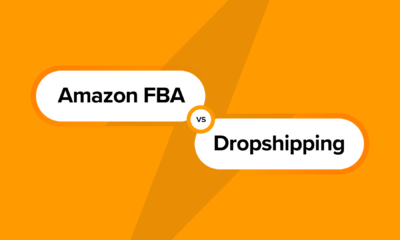SOCIAL
YouTube Expands Test of Product Tagging in Uploads, Providing Another Creator Monetization Option
With all the major platforms now looking to integrate commerce options, YouTube’s expanding its test of third-party product tags, which enable chosen creators to tag products that are featured in their video clips, with the creator, at least at present, being paid by directly by YouTube for using these item highlights.
As you can see in this example, some creators are being prompted to tag products as shoppable items, without having to establish separate branded content deals for such.
“Viewers will be able to learn more about the products, and discover ways to purchase them without leaving YouTube.”
As reported by Business Insider, YouTube launched the first iteration of the program back in April, but more recently, it’s been inviting more creators into the fold. Over time, that’s expanding the amount of product tags within clips, which will help to raise awareness of the option, while it could also help to shift user behaviors around the process, and eventually, provide another pathway for monetization in the app.
It’s similar to Instagram’s product tagging process, which it also launched back in April, enabling creators to earn a commission from any direct sales generated as a result of their products tags.

Though as noted, YouTube’s system, at least right now, is not based on commission per sale, with YouTube instead playing a flat, monthly rate to creators for using the tool.
As per Business Insider:
“[One] creator was offered a minimum of $50 each month for using the feature, plus they could earn up to $0.08 each time a viewer clicked on a product tag and visited the product page. The cost-per-click rate YouTube is offering varies by creator and product based on a “number of factors,” the company told Insider, but declined to share more on the exact payment structure.”
Eventually, you would expect that YouTube would be looking to move to a direct affiliate program, with creators earning a cut from sales generated, establishing another ecosystem to facilitate monetization in the app, while also helping to expand its eCommerce push.
Though questions remain as to how much users actually want to shop in social apps, and how valuable such tags and in-stream buying options will be.
In-stream shopping has been a transformative trend in China, with some other Asian markets also taking to the more streamlined product display to purchase process. But thus far, western audiences haven’t been as quick to jump onto the trend, despite the overall rise in online shopping behavior.
Live-stream commerce is where most social apps are currently focused, with TikTok, Meta and YouTube all incorporating varying forms of live-stream shopping tools to align with impulsive shopping behaviors and modern engagement trends.
That could still become a thing, but the results thus far show that while consumers are researching products within social apps, they’re generally happy to purchase them on each company’s own website. Which could present a larger challenge here, in that it may reflect a distrust in the payment services offered within social apps, and in registering your bank details in connection with your in-app data.
I mean, when you consider the bad press around data sharing and privacy that’s been attached to Meta and TikTok in particular, that wouldn’t be surprising, while Chinese regulators have far more control over how such businesses operate in their region. That could be a key challenge for western platforms to overcome – or maybe, this is just a generational shift, and as younger consumers grow up, and have more spending capacity, in-stream shopping will become a more accepted, adopted behavior.
Either way, the jury’s currently out on the process, but what you can be sure of is that whatever one platform launches, the others will follow, as they all seek to offer the best revenue share deals for creators, in order to better align them to their apps.
If in-stream shopping catches on, TikTok could see big success with product tags and its Shop tools, as it has already in China, which is why Meta and YouTube have little choice but to offer the same, in case that happens, and they miss the boat on a key opportunity.
I don’t see it becoming a big thing right away, but you can expect in-stream buying to gain momentum over time, especially as more people have better, safer experiences in providing their payment details within each app.
SOCIAL
Snapchat Explores New Messaging Retention Feature: A Game-Changer or Risky Move?

In a recent announcement, Snapchat revealed a groundbreaking update that challenges its traditional design ethos. The platform is experimenting with an option that allows users to defy the 24-hour auto-delete rule, a feature synonymous with Snapchat’s ephemeral messaging model.
The proposed change aims to introduce a “Never delete” option in messaging retention settings, aligning Snapchat more closely with conventional messaging apps. While this move may blur Snapchat’s distinctive selling point, Snap appears convinced of its necessity.
According to Snap, the decision stems from user feedback and a commitment to innovation based on user needs. The company aims to provide greater flexibility and control over conversations, catering to the preferences of its community.
Currently undergoing trials in select markets, the new feature empowers users to adjust retention settings on a conversation-by-conversation basis. Flexibility remains paramount, with participants able to modify settings within chats and receive in-chat notifications to ensure transparency.
Snapchat underscores that the default auto-delete feature will persist, reinforcing its design philosophy centered on ephemerality. However, with the app gaining traction as a primary messaging platform, the option offers users a means to preserve longer chat histories.
The update marks a pivotal moment for Snapchat, renowned for its disappearing message premise, especially popular among younger demographics. Retaining this focus has been pivotal to Snapchat’s identity, but the shift suggests a broader strategy aimed at diversifying its user base.
This strategy may appeal particularly to older demographics, potentially extending Snapchat’s relevance as users age. By emulating features of conventional messaging platforms, Snapchat seeks to enhance its appeal and broaden its reach.
Yet, the introduction of message retention poses questions about Snapchat’s uniqueness. While addressing user demands, the risk of diluting Snapchat’s distinctiveness looms large.
As Snapchat ventures into uncharted territory, the outcome of this experiment remains uncertain. Will message retention propel Snapchat to new heights, or will it compromise the platform’s uniqueness?
Only time will tell.
SOCIAL
Catering to specific audience boosts your business, says accountant turned coach

While it is tempting to try to appeal to a broad audience, the founder of alcohol-free coaching service Just the Tonic, Sandra Parker, believes the best thing you can do for your business is focus on your niche. Here’s how she did just that.
When running a business, reaching out to as many clients as possible can be tempting. But it also risks making your marketing “too generic,” warns Sandra Parker, the founder of Just The Tonic Coaching.
“From the very start of my business, I knew exactly who I could help and who I couldn’t,” Parker told My Biggest Lessons.
Parker struggled with alcohol dependence as a young professional. Today, her business targets high-achieving individuals who face challenges similar to those she had early in her career.
“I understand their frustrations, I understand their fears, and I understand their coping mechanisms and the stories they’re telling themselves,” Parker said. “Because of that, I’m able to market very effectively, to speak in a language that they understand, and am able to reach them.”Â
“I believe that it’s really important that you know exactly who your customer or your client is, and you target them, and you resist the temptation to make your marketing too generic to try and reach everyone,” she explained.
“If you speak specifically to your target clients, you will reach them, and I believe that’s the way that you’re going to be more successful.
Watch the video for more of Sandra Parker’s biggest lessons.
SOCIAL
Instagram Tests Live-Stream Games to Enhance Engagement

Instagram’s testing out some new options to help spice up your live-streams in the app, with some live broadcasters now able to select a game that they can play with viewers in-stream.
As you can see in these example screens, posted by Ahmed Ghanem, some creators now have the option to play either “This or That”, a question and answer prompt that you can share with your viewers, or “Trivia”, to generate more engagement within your IG live-streams.
That could be a simple way to spark more conversation and interaction, which could then lead into further engagement opportunities from your live audience.
Meta’s been exploring more ways to make live-streaming a bigger consideration for IG creators, with a view to live-streams potentially catching on with more users.
That includes the gradual expansion of its “Stars” live-stream donation program, giving more creators in more regions a means to accept donations from live-stream viewers, while back in December, Instagram also added some new options to make it easier to go live using third-party tools via desktop PCs.
Live streaming has been a major shift in China, where shopping live-streams, in particular, have led to massive opportunities for streaming platforms. They haven’t caught on in the same way in Western regions, but as TikTok and YouTube look to push live-stream adoption, there is still a chance that they will become a much bigger element in future.
Which is why IG is also trying to stay in touch, and add more ways for its creators to engage via streams. Live-stream games is another element within this, which could make this a better community-building, and potentially sales-driving option.
We’ve asked Instagram for more information on this test, and we’ll update this post if/when we hear back.
-

 MARKETING6 days ago
MARKETING6 days agoA Recap of Everything Marketers & Advertisers Need to Know
-

 PPC4 days ago
PPC4 days agoHow the TikTok Algorithm Works in 2024 (+9 Ways to Go Viral)
-

 MARKETING4 days ago
MARKETING4 days agoHow To Protect Your People and Brand
-

 SEARCHENGINES5 days ago
SEARCHENGINES5 days agoGoogle Started Enforcing The Site Reputation Abuse Policy
-

 SEO5 days ago
SEO5 days agoBlog Post Checklist: Check All Prior to Hitting “Publish”
-

 SEO3 days ago
SEO3 days agoHow to Use Keywords for SEO: The Complete Beginner’s Guide
-

 PPC6 days ago
PPC6 days agoHow to Craft Compelling Google Ads for eCommerce
-

 SEARCHENGINES6 days ago
SEARCHENGINES6 days agoGoogle Says Again, Sites Hit By The Old Helpful Content Update Can Recover
















You must be logged in to post a comment Login